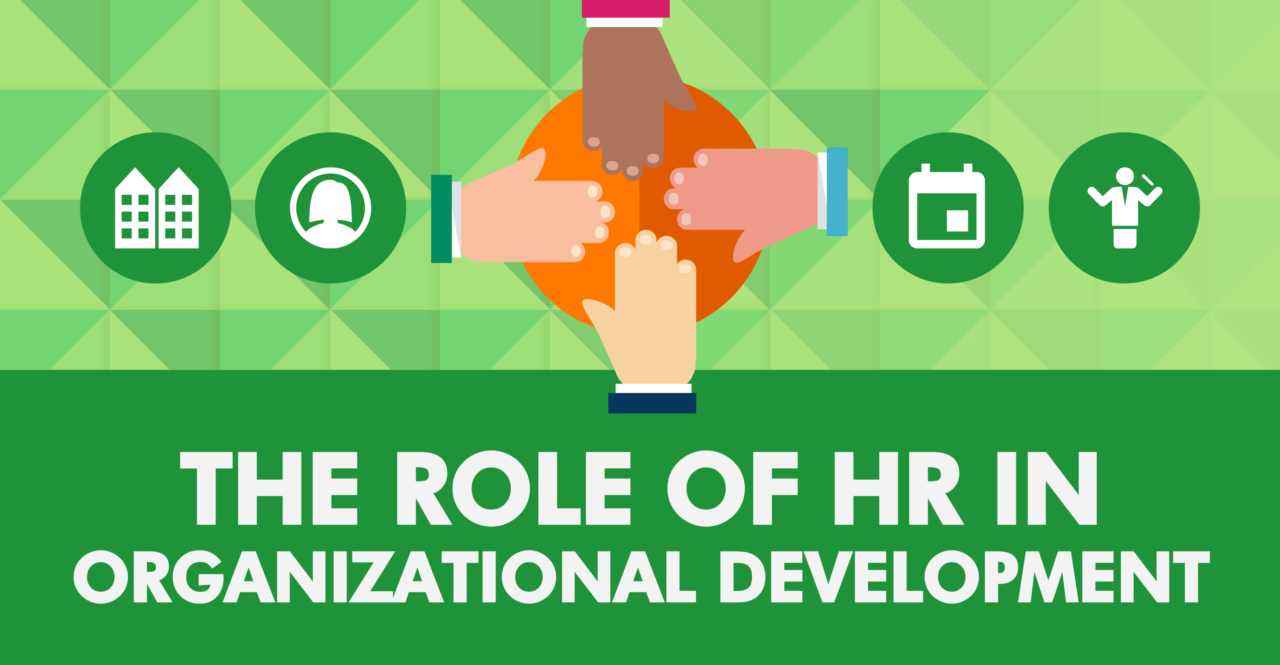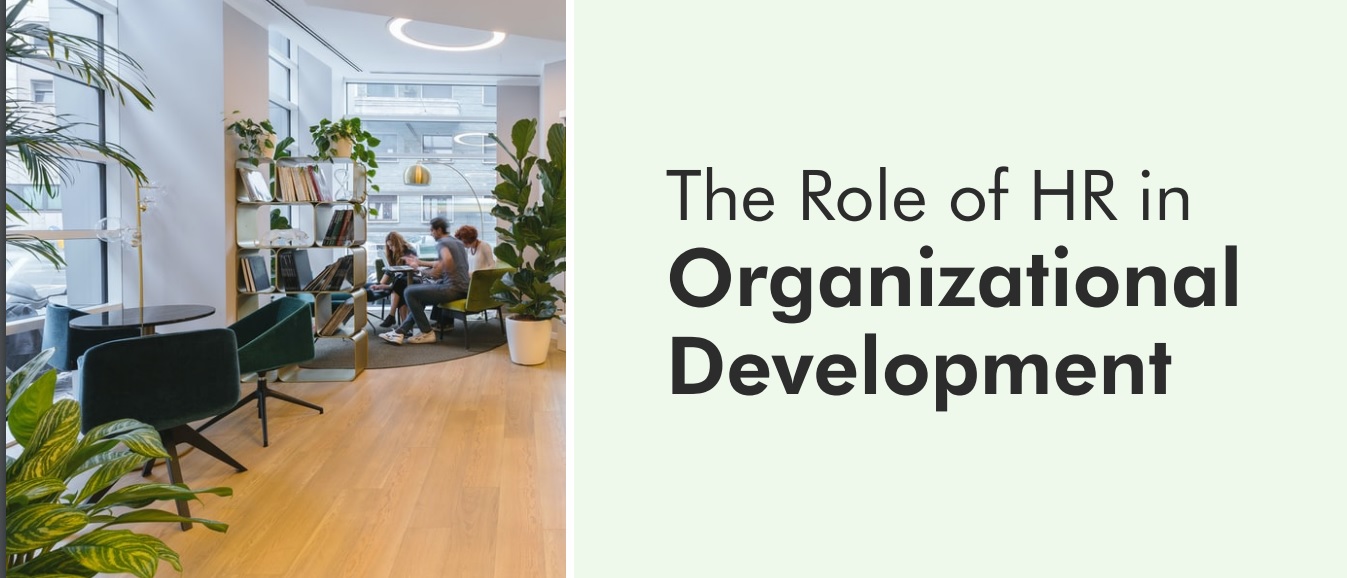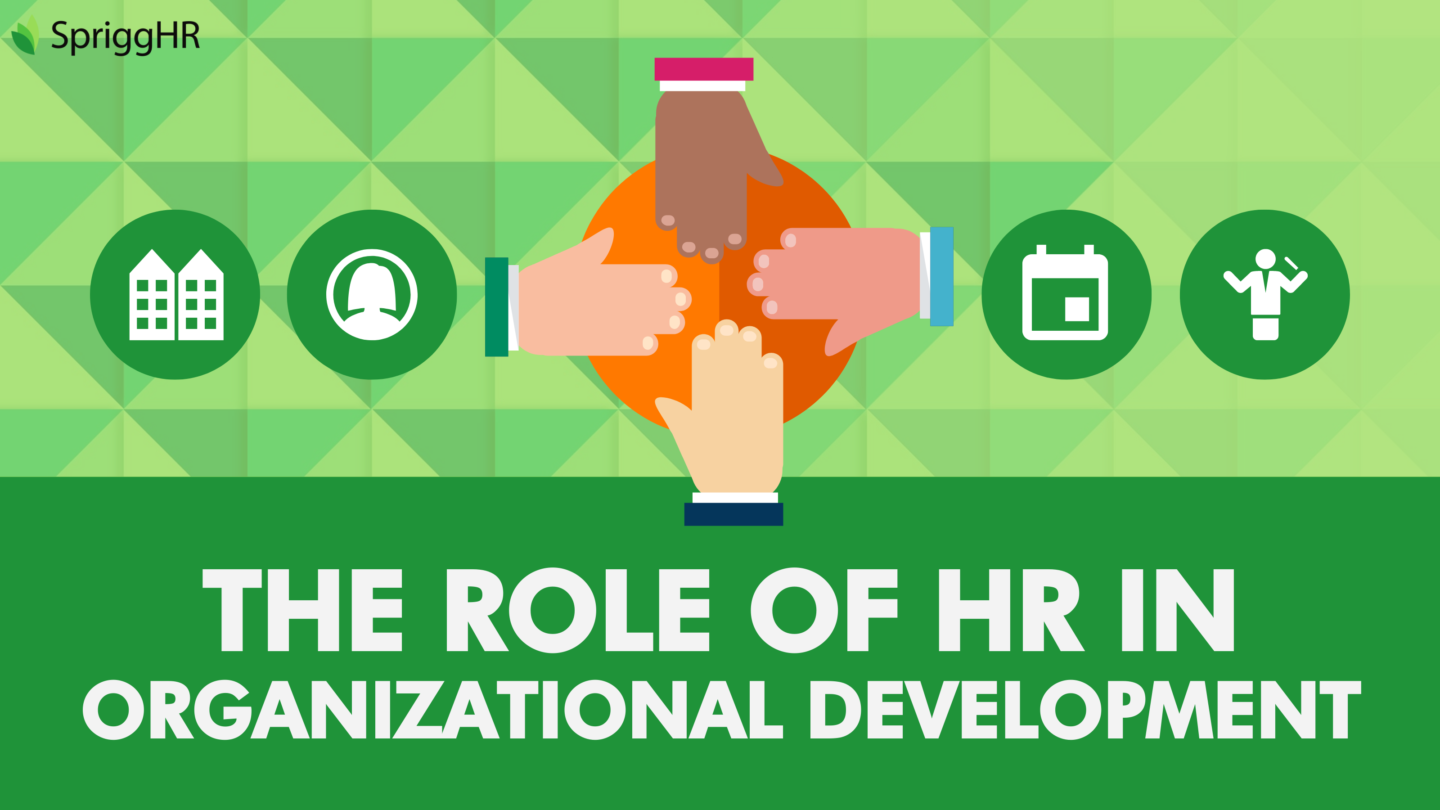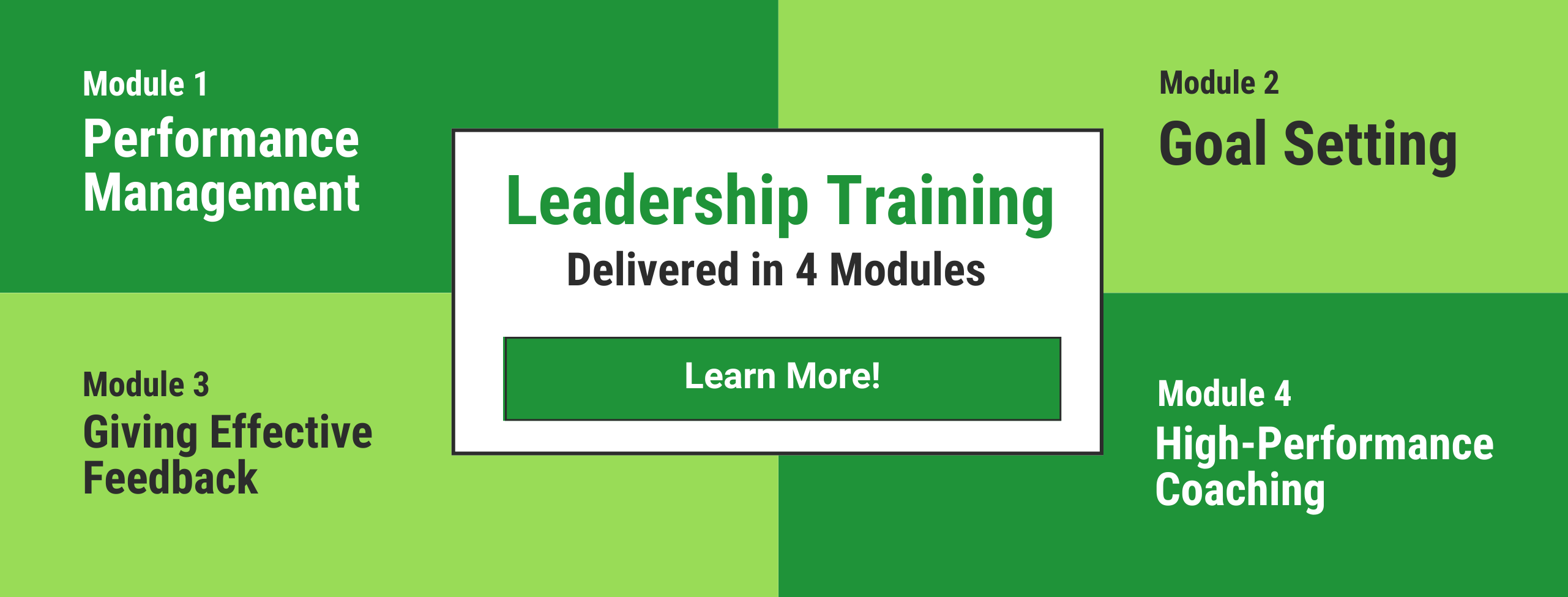
The Role of HR in Organizational Development
The precise difference between human resources (HR) and organizational development (OD) can be hard to define. Both functions deal with people, so many professionals naturally assume they accomplish the same thing. However, there are far more differences between HR and OD than there are similarities.
In a hurry? Take our white paper to go!

Organizational Development
Send download link to:
Human Resources and Organizational Development: What’s the Difference?
Human Resources
At its conception, Human Resources professionals were primarily concerned with the efficient management of the employment process. Though their duties now extend far beyond the processes of recruitment and termination, this was traditionally the central duty of an HR professional. The Human Resources department also focused on assisting the organization in complying with governmental regulations, and in mitigating employment-related risks and conflict.
Because of the nature of their duties, HR professionals in a corporation usually found themselves acting in a support role to all the other business units within the company. As a result, the HR culture seemed largely transactional, and Human Resources were heavily utilitarian and process-and-compliance-oriented in their function.
Historically, Human Resources departments were concerned with the following:
- Managing the hiring, onboarding, retention, and performance processes
- Appeasing employment-related risks
- Ensuring legal, governmental, and contractual compliance
- Ensuring sufficient equity and diversity among the workforces
- Developing and enforcing policies and procedures
- Reducing and maximizing labor costs
- Promoting workplace health and safety
Organizational Development
As opposed to Human Resources, the conception of organizational development was founded on a need for a systematic means of applying behavioral science to help organizations improve individuals and processes. The goal of organizational development is to assist individuals in functioning better, within an organizational context. Essentially, OD strives to represent and promote meaningful and purposeful change for a company.
An organizational development professional focuses on data and research that can advance their efforts to improve an organization’s overall systems and processes. Traditionally, organizational development sought to:
- Improve organizational effectiveness, while still adhering to the company’s culture and values
- Maximize employee potential, help them amplify their contributions, and leverage their accomplishments to further organizational success
- Assess the existing processes involving people within an organization, then conduct interventions to try and create positive and productive improvement
- Align individual behaviors with the company’s strategy, structures, objectives, processes, etc.
- Help promote organizational values throughout the workplace and amongst the workforces.
Blurring the Lines Between Human Resources and Organizational Development
While the distinctions between HR and OD seem apparent when comparing their traditional objectives, over the past several years, management experts have started a shift in their HR practices that lean largely towards what OD set out to do in the first place.
It is not uncommon to hear the phrase “strategic HR” in the modern workplace. This newer notion encompasses a shift in focus towards transforming HR into a business partner that provides business solutions and strategies, not just transactional services. This outlook on how Human Resources should be managed has embedded itself in many companies and made the goal of a strategic HR department commonplace. Some companies have even forgone internal organizational development departments altogether in favor of strategic HR.
The blurring of lines has taken place between organizational development, and it isn’t likely that this shift in thinking will backtrack or remedy itself. But, is it an actual issue? Should the organizational development community worry about it, should they really push for a return to a company culture with more rigid boundaries?
Human Resources professionals have demonstrated that they are ready, willing, and capable of merging the functions of HR and OD for the benefit of the company. The organizational development community could fight to keep its practice and strategies unique and separate, or OD professionals could shift focus alongside HR. Organizational development practitioners can begin to focus on teaching, promoting, and developing the key principles and practices involved in organizational development. These are then made accessible to all types of business professionals, making it a transferrable skill that is still unique to the OD source.
Simply put, rather than striving to keep organizational development as a separate business function only practiced by a few trained professionals, OD professionals can push to keep organizational development as a distinct, and recognizable, business discipline that can be used by many.
The concept of strategic HR, and incorporating organizational development practices into HR efforts, is likely here to stay. The principle goal should always be to constantly improve the people-side of business, and that applies regardless of which type of professionals are leading the advancement of that cause. Rather than trying to segregate things by who traditionally does what, the better course of action is to ensure HR professionals understand and appreciate when they are applying organizational development techniques to solve dilemmas, and which problems require OD solutions rather than HR solutions.
18 Techniques to Promote Organizational Development in Your Company
Despite its distinction from traditional HR practices, the field of organizational development is still technical, and so too are its interventions. Organizational development interventions, also called OD techniques, are constantly expanding and adapting to suit modern business demands. The necessity of certain techniques over others depends largely on the makeup of every individual company but having a general overview of the different types of intervention is still critical if you seek to promote OD within your company culture.
Human Process Interventions
These interventions are the change processes that relate to interpersonal relationships, as well as group and organizational dynamics.
1. Individual Intervention – this targets the individual, usually aimed at improving communication with others. In this process, the individual is coached on their existing behaviors that are deemed to be counter-productive to interpersonal communication.
2. Group Intervention – these are aimed towards the process, content, or structure of a group. The process refers to the group’s internal practices, the content refers to what the group is working on, and the structure relates to the recurring methods being used to reach tasks and deal with external issues.
3. Third-Party Intervention – this type of intervention is often used when conflicts arise. Not all conflicts are inherently bad, but there do exist those that need to be resolved quickly to avoid major disruption. A third-party intervention, usually appointing an organizational development consultant, helps to control and resolve the conflict efficiently.
4. Team Building – this is one of the better-known organizational development techniques. It refers to a range of group activities that help teams improve upon the overall team dynamics; e.g., the way they accomplish duties and tasks.
5. Organizational Confrontation Meeting – this type of intervention is aimed at identifying problems, establishing priorities and setting action targets, and beginning work on the identified problems on an organization-wide scale.
6. Intergroup Relations Interventions – these aim at recognizing, diagnosing, and understanding intergroup relations. Like organizational confrontation meetings, problems and conflicts are identified, priorities and action targets are set, and work begins on the identified problems.
7. Large-Group Interventions – these interventions aim to bring many organization members and major stakeholders together to organize individuals into teams. The goals of these large-group interventions are to identify and resolve company-wide issues, to design new approaches to structuring and managing the organization, or to propose future directions for the business. Oftentimes, these interventions are referred to as “open space meetings”, “world cafes”, or “future searches”.
Technostructural Interventions
These interventions are the change processes that aim at improving on the technology and structure of the organizational itself. Because of today’s rapidly changing and advancing markets and technological landscapes, these techniques are growing largely in popularity.
8. Organizational/Structural Design – the key to how an organization functions lies in its functional structure. The classical hierarchal organizational chart is an example of a functional structure. Others can include divisional, matrix, process, customer-centric, and network structure. The key practices in this organizational development technique are reengineering and readjusting organizational design. This means rethinking the way in which work is done, adequately preparing the organization for shift, and then restructuring the company around the new processes.
9. Total Quality Management – also known as continuous process improvement, total quality management arose from a manufacturing emphasis on quality control. This technique represents a long-term effort to orient all company activities around the concept of quality.
10. Work Design – all work is accomplished with the goal of achieving some sort of outcome. Jobs and their descriptions can be realigned to gear themselves towards the most efficient way of achieving that outcome. Or, alternatively, the needs and satisfaction of the employee can be put front and center. Depending on the chosen approach, different OD skills are needed, but any design of work that leads to optimum productivity is called work design.
11. Job Enrichment – this can be considered a sub-component of work design. The goal of job enrichment is to create a job that is interesting and challenging for the individual doing it. Some factors considered can include skill variety, task identity, autonomy, and employee feedback.

Human Resource Management Interventions
Evidence of the blurred lines between HR and OD, these organizational development techniques focus on the way in which the individual is managed. These are the interventions most frequently used by strategic HR departments.
12. Performance Management – good performance management includes strategies such as goal setting, performance tracking with appraisal, and typically a reward systems
13. Developing Talent – this intervention method draws on talent management practices such as coaching and mentoring, technical skills development interventions, career planning, and leadership development.
14. Diversity Interventions – a diverse pool of talent is the key to innovation. This includes diversity in age, gender, race, sexual orientation, disabilities, and culture and value orientation. These interventions aim to increase company diversity.
15. Wellness Interventions – these interventions include the implementation of stress management programs and employee assistance programs. They address social trends and promote a healthy work-life balance for employees.
Strategic Change Interventions
These organizational development interventions are the larger-scope ones that focus on the change processes. Regardless of the influence of strategic HR in these efforts, the OD department always plays a crucial part in executing such changes.
16. Transformational Change – this is a change process that seeks to change an organization’s a majority if not all systems and processes potentially impacting extensively several operational practices.
17. Continuous Change – a technique that challenges companies to review and revise an identified system; a common focus is in the way in which new skill levels are strengthened or if in fact, a company is striving to become a learning organization.
18. Trans organizational Change – this technique involves employing change intervention strategies that move beyond a single organization. This includes mergers, acquisitions, allying, and strategic networking.
The Role of HR in Organizational Development
Organizational development has the power to dramatically improve companies and the well-being of their employees. For that reason alone, organizational development is deserving of consistent effort and attention by business leaders everywhere. In today’s modern business market, a company ready and willing to enact change wherever and whenever necessary to respond to demands, or to improve their chances of long-term success, are those organizations that will undoubtedly sustain growth and success. Every organization must look to build an effective employee experience that helps attract, retain, and engage the right talent, and that begins when you have an effective integrated approach to HR and OD practices.
Take our white paper to go!

Organizational Development
Send download link to:





